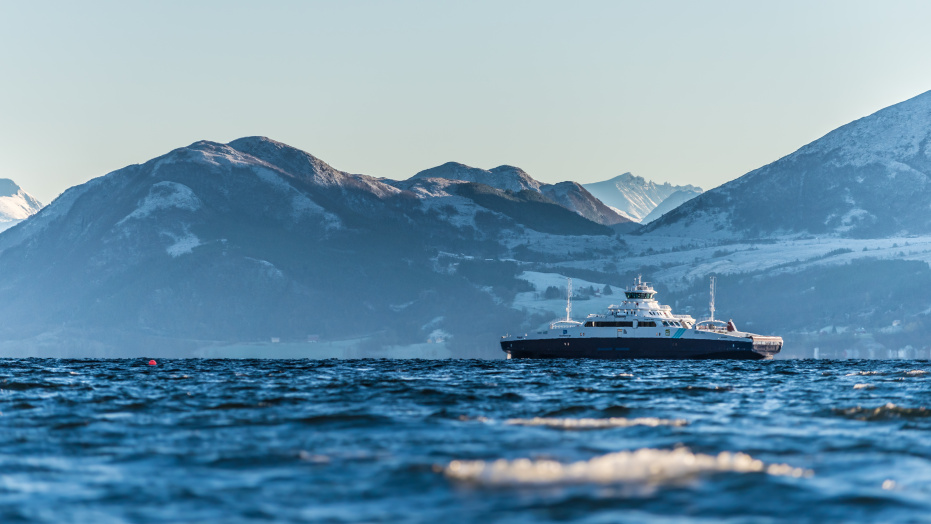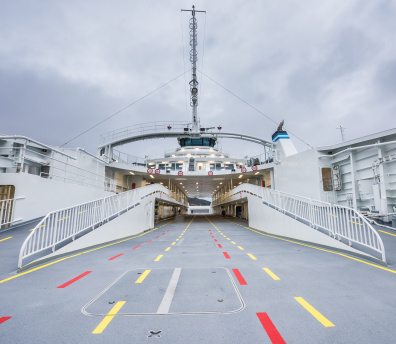latest
 latest
latest
MF Munken and MF Lagatun save 70 percent on fuel for the Flakk-Rørvik crossing compared with a diesel driven ferry of the same size due to a major focus on weight reduction. Photo: Geir Magne Sætre
Heavyweights make lightweight vessel
Together with Weber, GLAVA® is becoming a heavyweight in the supply of lightweight solutions for ships.
In Autumn 2018 Myklebust Shipyard completed building of the two hybrid ferries MF Munken and MF Lagatun, which now sail the route Flakk-Rørvik outside Trondheim. Commuters from Fosen and city dwellers holidaying along the coast can thus now take a much quieter, more environmentally friendly 25-minute trip across the Trondheim Fjord. A major reason for this is the ship’s reduced weight, which helps make it possible to replace almost all fossil fuel use with electricity.
Multi Maritime in Førde designed the twin vessels for bus and ferry company FosenNamsos. For over 35 years Multi Maritime has designed vessels from passenger and car ferries to icebreakers and offshore service ships.
“Weight is an important parameter when it comes to ship design. Unnecessary weight high up in a vessel makes it less stable in rough seas. Ferries that run on batteries do not generate a lot of excess heat, so it’s important to reduce loss of heat on board. The increased insulation thickness necessary on hybrid vessels, as compared with those running combustion engines, mean stricter demands in the choice of insulation regarding weight and insulation ability. Weight reduction is an important factor in our product choice, says Civil Engineer at Multi Maritime,” Erik Fristad.
Main Dimensions
- Length, over all: ~107.70 m
- Breadth, moulded: 16.80 m
- Depth, moulded main deck: 5.50 m
- Summer draft: ~4.00 m
- Cars: 130
- Passengers (incl. crew): 399 persons
- Gross tonnage: approx. 3850 GRT
- Class: DnV 1A1, CAR FERRY B, Battery (Power), E0, R4 (NOR)
Design: Multi Maritime
Yard: Myklebust Verft, Norway
Owner: FosenNamsos Sjø AS
Main dimensions:
- Length, over all: ~107.70 m
- Breadth, moulded: 16.80 m
- Depth, moulded main deck: 5.50 m
- Summer draft: ~4.00 m
- Cars: 130
- Passengers (incl. crew): 399 persons
- Gross tonnage: approx. 3850 GRT
- Class: DnV 1A1, CAR FERRY B, Battery (Power), E0, R4 (NOR)
Design: Multi Maritime
Yard: Myklebust Verft, Norway
Owner: FosenNamsos Sjø AS
Products used in this project:
Glava Marine Roll 16 : 50 and 100 mm
Glava Marine Roll 16 Alu, 50 mm
Glava VVS Tape
Seaprotect Tape G120
Glass Fabric White G220
U SeaProtect Roll 24 Alu1, 50 mm
U SeaProtect Roll 36, 70 mm
U SeaProtect Slab 56, 70 mm
U SeaProtect Slab 76, 25 mm
B Facing Composite Alu/Glass Cloth
Glavaflex Roll
Climpipe Section Alu2 – Glava Rørskål

